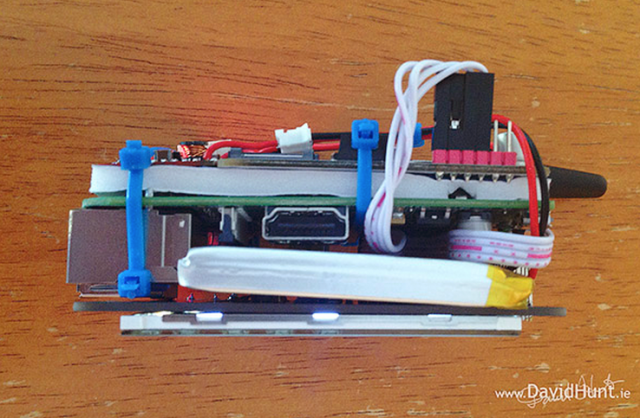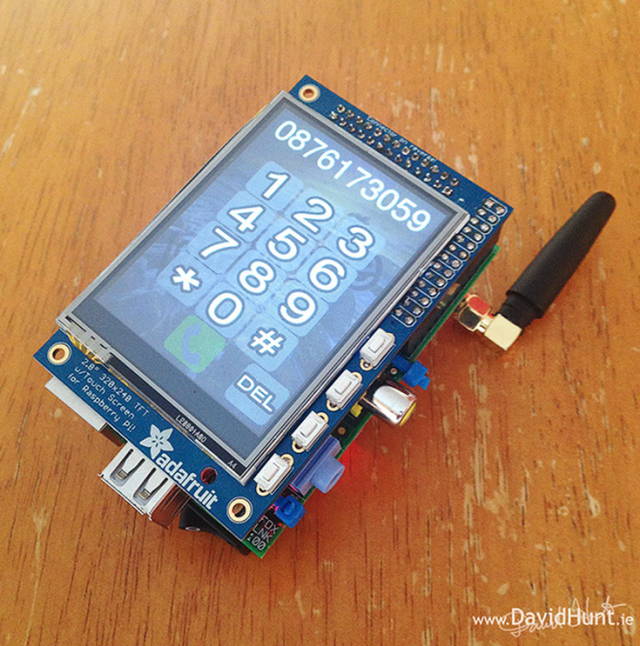
Raspberry Pi-using tinkerer David Hunt—who previously built a bark-activated door opener for dogs—is at it again with a real, working cell phone powered by the tiny computer and a few other items.
"PiPhone" cost Hunt $158 to build with these components, all held together with cable ties:
- Raspberry Pi Model B – $40
- PiTFT Touchscreen 320×240 – $35
- 2500mAh LiPo battery – $15
- SIM900 GSM/GPRS module – $48
- DC-DC boost converter 3.3V – 5V 1A – $10
- Cables, connectors, switch, etc. – $10
"As you can see from the cost of the components, you’d be FAR better off going into your local phone store and picking up a normal smartphone, but hey, where’s the fun in that?" Hunt wrote on his blog today. "I got a great kick out of the first phone call I made with this thing. And it won't stay in one piece for long, I’ll be using those parts for other projects very soon!"

When powered on, PiPhone boots into the Raspbian operating system and then shows a numeric keypad, so it takes a while to get going.
Hunt, a Linux software engineer in Ireland, provided video evidence of the PiPhone making a call. It works along with a microphone and headset, though Hunt sent the call audio out through an amplifier to aid in the demonstration:
"OK, it's a bit of a mess, but you wouldn't actually use it in the real world," Hunt said in the video with a laugh. "You can feel it getting a little warm. It doesn't crash or anything, but I'm sure it wouldn't be good to put it in an enclosure without some sort of heat sink."
The battery would probably last a couple of hours, he wrote in reply to commenters on his blog. He developed the touchscreen interface in Python and plans to publish the code next week.
The PiPhone won't get you free phone calls, as anyone building one would need to "purchase a SIM card from a local service provider," he wrote. PiPhone's wireless module is capable of sending texts and using data, Hunt wrote, but he only showed the PiPhone making a phone call.
reader comments
49